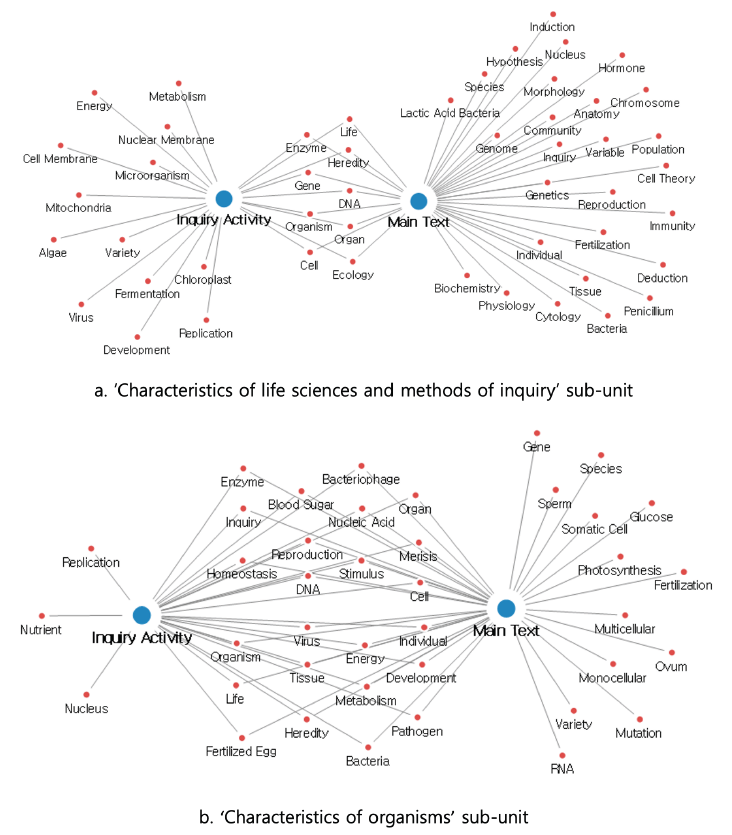Abstract
Curriculum is the basis of school education that presents the direction of education. In accordance with the trend of the times, the 2015 revised science curriculum emphasizes inquiry, which is the most important element of science education. As a result, it presents inquiry activities. However, there is no analysis on whether the inquiry activities presented in the curriculum are appropriate for the unit. Therefore, in this study was analyzed whether the inquiry activities presented in the 2015 revised Science Curriculum Life ScienceⅠ were appropriate. To this end, the semantic network analysis was used to analyze the connection network of concepts presented in the inquiry activities of the curriculum and the main texts of the textbook. The results reveal that the most units included in Life Science I of the 2015 Revised Science Curriculum are not well structured for learning life science concepts through the inquiry activities, as the concepts presented in the inquiry activities and the main text are not well connected and there were differences in the number of inquiry activities for each sub-unit. Based on the results, it was concluded that the inquiry activities presented in Life Science I of the 2015 revised science curriculum needed to be modified and supplemented. It is necessary to appropriately distribute the number of inquiry activities by sub-unit so that the inquiry activities presented in the curriculum can be appropriate. And to add social issues and real life-related contents to the text of the textbook. In addition, additional research is required on the degree of students' understanding caused by the difference in concepts connecting between inquiry activities and main texts. The results of this study are expected to be used as guidelines for future curriculum and textbook.
Figures & Tables

Fig. 1. The connection networks at the sub-unit level between the concepts presented in the inquiry activities and the main text of the 'Understanding life science' unit


